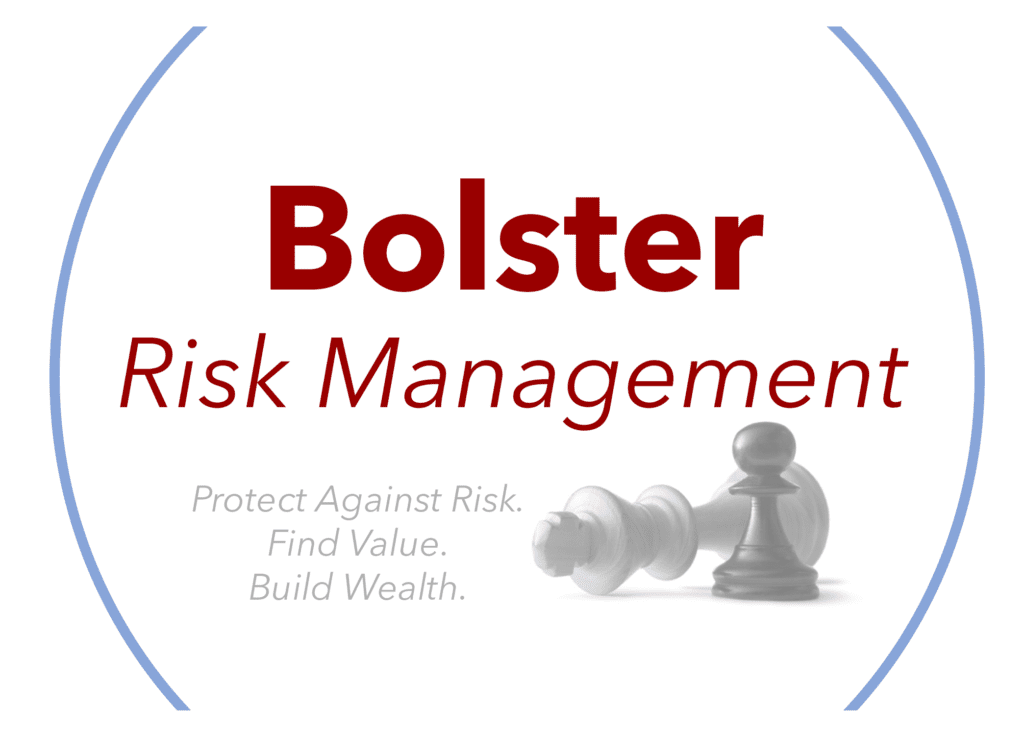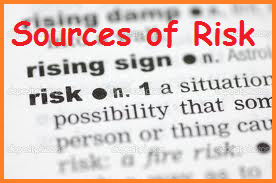Perils cause deviation in events from those that we expect. They are the immediate cause of loss. Their very existence ensures that we are surrounded by Risk, for example, flood, death, sickness, theft, terrorism etc. These are discussed below.
1. Nаturаl Pеrіlѕ
Our very existence on the planet earth ensures that we live with Risk. The almighty has gifted nature with many energy sources in all his wisdom. Unbalances or disturbances beyond limits take the form of Risks called perils, which can lead to unexpected losses. There are unexpected natural phenomena that, year in and year out, cause untold misery and loss of life and property.
The most recent example in the Indian context is the Gujarat Earthquake on Jan 26th 2001, which caused widespread devastation. Nearly 20 000 lives were lost, numerous villages and localities were razed to the ground and lakh were rendered homeless. The fury of nature and the havoc it plays with mankind is no stopping.
Volcanic eruptions, fire due to lightning, landslides, cyclones, hurricanes, storms, floods, the vagaries of weather, unseasonal rainfall and prolonged dry spells, and hailstorms are some other examples of natural risks that can cause losses. These perils are also called Acts of God, and there is little that mankind can do to stop them; he can only learn to live with them and devise means to lessen the negative impact.
A global survey of losses for the year 2006 conducted by Sigma estimated the insured losses due to natural calamities at 14.8 billion dollars. Out of this, 12.6 billion dollars was on account of floods alone (while looking at these figures, we have to bear in mind that these are only for insured losses, the actual figure may be much more).
40% of the lives lost during the year in catastrophes were on account of natural disasters, with a major contribution being the lives lost due to floods in India & Bangladesh in and Southern Africa in February’2000 and the Tsunami in 2005-06.
Mаn Mаdе Pеrіlѕ
Then there are the manmade perils, which cause loss; these are an outcome of our society and are the violent actions and unethical practices of people, which result in deviation from the expected. There are many of these, but only a few are being discussed to illustrate their significance.
Thеft
Page – 3 of your daily newspaper provides a fair idea about this rampant sickness in our society. The entire page is full of incidents of thefts of motorcycles, daylight robberies and burglaries, loss of human life by accident, terrorism, hostility, adulteration, murder etc. The figure for the exact extent of losses due to such incidents is not available for India. Still, a study by the FBI in the USA in 1974 estimated that such losses in material terms alone exceeded $3 billion that year. Not only outsiders but insiders also steal. Employees steal tools, equipment and goods from their employers worth millions every year.
Rіоtѕ , Strіkеѕ аnd Mаlісіоuѕ Dаmаgе
These are perils that every property owner faces. During Riots, miscreants damage Public and Private property, loot stores, inflict injury or death to innocent people and police personnel and bring business to a standstill causing untold damage. Similarly, strikes sometimes turn violent, damaging life and property. Strikes also result in loss of production, causing huge monetary losses, which may even result in bankruptcy. Vandals target unoccupied houses when the proprietors are on vacation and damage the property, sometimes setting it on fire. Cars parked in the street are also often vandalized.
Aссіdеntѕ
People cause accidents, and they cause injury to themselves or others and damage to property. Automobile accidents alone contribute the maximum share of losses due to this peril. As per the WHO study, each year, "Road Traffics" take the lives of 1.2 million men, women & children around the world and seriously injures millions more. In addition to automobile accidents, accidents due to the carelessness of humans result in huge losses to property and life. For example, a carelessly dropped cigarette can lead to fire resulting in heavy losses to property and even life. Furthermore, thousands of workers lose their lives and limbs every year in industrial accidents caused by human error or carelessness.
One of the reports by Sigma for the year 2006 puts the global figure of manmade insured losses at 5 billion dollars, with 50% being attributed to Industrial fires. Eleven thousand seven hundred people lost their lives, and out of these, 65% were killed in transport-related disasters (which whicappreciatesng the extent of losses. However, we must remember that the Sigmas report is only a study of major disasters, and only 350 events have been evaluated/studied during the year. Therefore, the figures give an idea, whereas the ground reality may be even more alarming).
Eсоnоmіс Pеrіlѕ
The third category of Perils or causes of Risk is economical. The e examples of this type of Risk are Depression, Inflation, Local fluctuations and the instability of Industrial firms.
Depression in the market leads to low production levels and an increase in unemployment. Low production results in reduced profits or losses for business houses, whereas unemployment stops the income of individuals causing mental and physical suffering.
When Inflation is there in the economy, the buying power of money declines, and the real value of savings and income is reduced. During such periods, people whose livelihood is based on a fixed income, such as pensioners (Retired persons), are the hardest hit and may find it impossible to make both ends meet.
This fluctuation in the general economy can cause unfavourable deviation from expectations and create risks for Industries, firms and individuals.
Sometimes, even though the country's general economic condition is stable, some areas may experience a recession. These are known as local fluctuations and can affect Individuals or business houses in the same manner as the general fluctuation in the economy, i.e. Depression & Inflation. When a particular area is affected, the value of investments made in the area declines, and jobs are also lost.
At times it is the individual firms that are to blame. The owners lose part or the whole of their investment, and workers lose their jobs. Many towns and communities depend on one single Industry for their well-being; when this Industry fails or decides to shift operations, the entire town or community is exposed to Risk.
Hаzаrdѕ
While perils are the direct cause of loss, hazards are the underlying factors that increase the probability of loss. There are conditions which are more hazardous than others, e.g., working as an electrician is more hazardous than a banker as it is more susceptible to accidents. Owning a property on the banks of the Ganga is more hazardous than a property in Chandigarh as it is exposed to the Risk of damage due to floods. Similarly, dealing in textiles is more hazardous than dealing in hardware as the Risk of loss due to fire is greater. There are three kinds of hazards:
Phуѕісаl Hаzаrd
These are hazards related to the property's physical aspects, which may influence the chances that the property may be damaged or increase or decrease the losses incurred due to a particular risk. For example, the location of a building affects its vulnerability to losses due to fire, floods, earthquakes etc. A residential building close to a unit manufacturing crackers will be more susceptible to losses than a building located in a purely residential area. The construction of a building also affects the extent of the loss. A building or the use to which it is being put is another example of a physical hazard. For example, the same building would be in greater danger of loss by fire if it were used for storing petroleum products than if used as an office or a departmental store.
Mоrаl Hаzаrd
Moral hazard also affects the probability of a loss occurring and increases the Risk. For example, a dishonest person may set his own house or property on fire to avail of the Insurance benefit. Likewise, an unscrupulous trader may arrange for a robbery in his store to get the benefits whenever persons of doubtful integrity buy an Insurance policy; the Risk increases because loss becomes a certainty.
Thіѕ іѕ nоt tо bе соnfuѕеd wіth mоrаl hаzаrd, whісh іnvоlvеѕ dіѕhоnеѕtу but mоrаlе hаzаrd іѕ аn аttіtudе оf lасk оf соnсеrn аbоut thе оutсоmе оf hіѕ асtіоnѕ. An еxаmрlе оf thіѕ іѕ а реrѕоn whо іѕ саrеlеѕѕ аbоut ѕtubbіng оut сіgаrеttеѕ аnd juѕt thrоwѕ thеm аrоund nоt іn thе lеаѕt bоthеrеd thаt hіѕ асtіоn mау саuѕе fіrе. Bаd hоuѕе kееріng іѕ аnоthеr еxаmрlе оf а mоrаlе hаzаrd аѕ thіѕ аlѕо іnсrеаѕеѕ thе сhаnсеѕ оf lоѕѕ оссurrіng.
Sources of risk / Factors creating Risk in life insurance
 |
| Factors creating risk |
Many factors create Risk in life insurance. They are:
Factors creating Risk, life insurance, Sources of Risk,
i. Age:
The mortality rate is normally 10-35. So age is an important factor. It is regarded as the major Risk in life insurance since the mortality rate of young people is lower life insurance for those people is riskier than the adult people.
ii. Profession:
The profession is another source of Risk in life insurance. For example- the professional driver has a high mortality rate. So drivers, mariners, pilots etc., have more Risk in life insurance.
iii. Physical condition:
It also creates Risk. It depends on physical condition. If a man's physical condition is good or vigorous, his life insurance is less risky.
iv. Character & Habit:
Character and habit are most important in a man. Bad habits create Risk, such as smokers and drunker have more Risk on life insurance because they cannot survive a long day.
v. Family History:
Sometimes family history creates Risk. Such as diabetes, heart-problem, pressures etc.
vi. Residence:
The residence is sometimes creating Risk. Where air pollution is high, their mortality rate is also high. The mortality rate is high for the people who live in slums.
vii. Education:
Education is another important factor that creates Risk. Highly educated people have no risk, and illiterate people have more Risk. The people who are hygienically educated pass their life. As a result, their mortality rate is low than uneducated people.
viii. Economic status:
It is another factor. The mortality rate is high for people with low economic status.
ix. Race & nationality:
Risk also depends on race and nationality. For example, people who are Chinee and Japanese, their low mortality rates. As a result, their Risk in life insurance is less.
x. Sex:
Sometimes sex of the person also creates Risk in life insurance.







